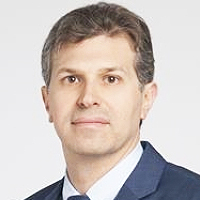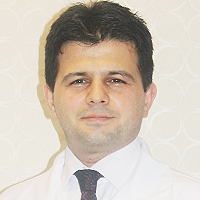Abstract
Research Article
Addiction and leadership: How authentic and transformative leaders are emerging from the adversity of substance use disorder
Jason Roop Ph.D.*
Published: 07 July, 2022 | Volume 6 - Issue 1 | Pages: 010-023
Objectives: This novel study explores the leadership traits held by people with substance use disorder. The purpose of this study is to help advance understanding of the positive qualities people with substance use disorder possess which can produce positive societal and organizational benefits once that person enters recovery. Additionally, this understanding can provide insight into effective treatment approaches that incorporate personal attributes that are present within active addiction.
Methods: A qualitative methodology was used which included semi-structured interviews, observations, and a focus group which allowed the researcher to conduct a thematic coding analysis. The participants came from diverse backgrounds and included participants from multiple regions across the United States. Leadership was defined as having various dimensions of effective leadership that are found in both Transformational and Authentic Leadership Theories.
Results: The findings revealed that people in addiction possess numerous leadership traits which position them for effective leadership and are further enhanced during their recovery journey. The top three traits which emerged from the data indicate that people in recovery from addiction are authentic, tenacious, and empathetic. Additionally, those in recovery have strong abilities to empower and inspire others and demonstrate posttraumatic growth which helps establish significant bonds of trust and commitment among followers.
Conclusion: The impact of this study will change how people view addiction. Identifying the hidden treasures of leadership which are present in those struggling with addiction could illuminate recovery pathways that help identify purpose and value. This would not only advance treatment opportunities but greatly assist organizations that need strong leadership. People with substance use disorder have all the right tools to become effective leaders, and this understanding can help mitigate the stigma associated with addiction and paint it in a more positive light.
Read Full Article HTML DOI: 10.29328/journal.jatr.1001022 Cite this Article Read Full Article PDF
References
- Sharma M. Research and Google Trend for Human Neuropsychiatric Disorders and Machine Learning: A Brief Report. Psychiatr Danub. 2021 Fall;33(3):354-357. doi: 10.24869/psyd.2021.354. PMID: 34795178.
- Grecco GG, Andrew Chambers R. The Penrose Effect and its acceleration by the war on drugs: a crisis of untranslated neuroscience and untreated addiction and mental illness. Transl Psychiatry. 2019 Nov 28;9(1):320. doi: 10.1038/s41398-019-0661-9. PMID: 31780638; PMCID: PMC6882902.
- Finkelstein S. Superbosses: How exceptional leaders master the flow of talent. Penguin.
- Moskalewicz M. Three modes of distorted temporal experience in addiction: Daily life, drug ecstasy, and recovery. A phenomenological perspective. Archiwum Historii Filozofii I Myśli Społecznej. 2016. 197-212.
- George B. Authentic leadership: Rediscovering the secrets to creating lasting value.John Wiley & Sons.
- Northouse PG. Leadership: Theory and practice. Sage publications.
- Hofstede G, Van Deusen CA, Mueller CB, Charles TA. What goals do business leaders pursue? A study in fifteen countries. Journal of International Business Studies.2002; 33(4): 785-803.
- Dill B, Holton R. The Addict in Us all. Front Psychiatry. 2014 Oct 9;5:139. doi: 10.3389/fpsyt.2014.00139. PMID: 25346699; PMCID: PMC4191137.
- Caetano PA, Lam JM, Morgan SG. Toward a standard definition and measurement of persistence with drug therapy: Examples from research on statin and antihypertensive utilization. Clin Ther. 2006 Sep;28(9):1411-24; discussion 1410. doi: 10.1016/j.clinthera.2006.09.021. PMID: 17062314.
- Ntoumanis N, Healy LC, Sedikides C, Duda J, Stewart B, Smith A, Bond J. When the going gets tough: the "why" of goal striving matters. J Pers. 2014 Jun;82(3):225-36. doi: 10.1111/jopy.12047. Epub 2013 Aug 7. PMID: 23750603; PMCID: PMC4288988.
- Lewis M. The biology of desire: Why addiction is not a disease. PublicAffairs.
- McGuire AP, Mota NP, Sippel LM, Connolly KM, Lyons JA. Increased Resilience is Associated with Positive Treatment Outcomes for Veterans with Comorbid PTSD and Substance Use Disorders. J Dual Diagn. 2018 Jul-Sep;14(3):181-186. doi: 10.1080/15504263.2018.1464237. Epub 2018 May 21. PMID: 29668364.
- Elkington R, Breen JM. How senior leaders develop resilience in adversity: A qualitative study. Journal of Leadership, Accountability and Ethics. 2015;12(4):
- Janson A. Extracting leadership knowledge from formative experiences. Leadership Quarterly. 2008; 4(1): 73-94.
- Brown HE, Lafferty ME, Triggs C. In the face of adversity: Resiliency in winter sport athletes. Science & Sports. 2015; 30(5): e105-e117.
- Haroosh E, Freedman S. Posttraumatic growth and recovery from addiction. Eur J Psychotraumatol. 2017 Sep 13;8(1):1369832. doi: 10.1080/20008198.2017.1369832. PMID: 29038678; PMCID: PMC5632763.
- Dawson DA, Grant BF, Stinson FS, Chou PS. Maturing out of alcohol dependence: the impact of transitional life events. J Stud Alcohol. 2006 Mar;67(2):195-203. doi: 10.15288/jsa.2006.67.195. PMID: 16568565.
- Tebes JK, Irish JT, Puglisi Vasquez MJ, Perkins DV. Cognitive transformation as a marker of resilience. Subst Use Misuse. 2004 Apr;39(5):769-88. doi: 10.1081/ja-120034015. PMID: 15202808.
- Fairholm MR, Fairholm G. Leadership amid the constraints of trust. Leadership & Organization Development Journal.
- Burns JM. Transforming Leadership. Grove Press.
- Bass BM, Riggio RE. Transformational leadership. Psychology press.
- Mureithi WN, Stewart JM, Brooks AC, Gastfriend DR. Patient Needs in Integrated Opioid Addiction Treatment: Qualitative Findings from a Pilot Study. In APHA's 2019 Annual Meeting and Expo (Nov. 2-Nov. 6). APHA.
- Maxwell JC. Developing the leaders around you: How to help others reach their full potential. HarperCollins Leadership.
- Latifi Z, Soltani M, Mousavi S. Evaluation of the effectiveness of self-healing training on self-compassion, body image concern, and recovery process in patients with skin cancer. Complement Ther Clin Pract. 2020 Aug;40:101180. doi: 10.1016/j.ctcp.2020.101180. Epub 2020 Apr 22. PMID: 32347209.
- Fulford MD, Coleman RA. Maximizing the value of values-based leadership (VBL): A reconceptualization for leaders and organizations. Journal of Applied Leadership and Management. 2021; 9: 61-72.
- Hildon Z, Smith G, Netuveli G, Blane D. Understanding adversity and resilience at older ages. Sociol Health Illn. 2008 Jul;30(5):726-40. doi: 10.1111/j.1467-9566.2008.01087.x. Epub 2008 Apr 28. PMID: 18444953.
- American Society of Addictive Medicine (2011). The ASAM Criteria. https://www.asam.org/Quality-Science/definition-of-addiction
- Calhoun LG, Tedeschi RG. Handbook of posttraumatic growth: Research and practice. Routledge. 2004
- American Psychiatric Association (2019) Diagnostic and statistical manual of mental disorders, edn 5. Washington, DC: American Psychiatric Association Press.
Figures:

Figure 1

Figure 2

Figure 3

Figure 4
Similar Articles
-
Novel Challenges for the Therapeutics of Depression: Pharmacological Modulation of Interaction between the Intracellular Signaling Pathways Mediated by Ca2+ and cAMPAfonso Caricati-Neto,Leandro Bueno Bergantin*. Novel Challenges for the Therapeutics of Depression: Pharmacological Modulation of Interaction between the Intracellular Signaling Pathways Mediated by Ca2+ and cAMP . . 2017 doi: 10.29328/journal.jatr.1001001; 1: 001-006
-
Predictive Psychological Factors of Problematic Alcohol use in University StudentsHatice Demirbas*. Predictive Psychological Factors of Problematic Alcohol use in University Students . . 2017 doi: 10.29328/journal.jatr.1001002; 1: 007-015
-
Addiction to self-strangulation: a case-reportAurely Ameller*,Yann Le Strat,Marion Cadranel,Celine Portalier, Caroline Dubertret. Addiction to self-strangulation: a case-report . . 2017 doi: 10.29328/journal.jatr.1001003; 1: 016-021
-
The effects of alcohol taxation and pricing policies on vodka sales in RussiaRazvodovsky YE*. The effects of alcohol taxation and pricing policies on vodka sales in Russia . . 2017 doi: 10.29328/journal.jatr.1001004; 1: 022-025
-
Alcohol-related poisonings in Russia: Obfuscated factsSergei V Jargin*. Alcohol-related poisonings in Russia: Obfuscated facts. . 2018 doi: 10.29328/journal.jatr.1001005; 2: 001-005
-
Parental Role in Adolescent Substance Abuse PreventionShelby Miller*. Parental Role in Adolescent Substance Abuse Prevention . . 2018 doi: 10.29328/journal.jatr.1001006; 2: 006-009
-
Cyberbullying: A narrative reviewTiffany Field*. Cyberbullying: A narrative review. . 2018 doi: 10.29328/journal.jatr.1001007; 2: 010-027
-
Factors affecting physical activity of recuperating alcoholics in Asumbi-Homabay rehabiliation center, KenyaLucy Amanya Mutuli*,Peter Bukhala and Gordon Nguka,Gordon Nguka. Factors affecting physical activity of recuperating alcoholics in Asumbi-Homabay rehabiliation center, Kenya . . 2018 doi: 10.29328/journal.jatr.1001008; 2: 028-034
-
A forensic treatment-monitoring study of an adult with attention-deficit disorder with hyperactivity and substance use disorderNiels Peter Nielsen,Elisabeth H Wiig*. A forensic treatment-monitoring study of an adult with attention-deficit disorder with hyperactivity and substance use disorder. . 2019 doi: 10.29328/journal.jatr.1001009; 3: 001-008
-
Assessment of physicians’ knowledge, attitudes, and practices regarding smoking cessation management in the Gaza StripKhaled Hani Alkhodari,Bakr Khadr Abo Jarad,Ahmed Ismail Al-Bahbhani,Sadi Yehia Nkhala,Ali Naim Al-Buhisi, Khamis Abdelkarim Elessi. Assessment of physicians’ knowledge, attitudes, and practices regarding smoking cessation management in the Gaza Strip. . 2020 doi: 10.29328/journal.jatr.1001010; 4: 001-005
Recently Viewed
-
Texture of Thin Films of Aluminum Nitride Produced by Magnetron SputteringStrunin Vladimir Ivanovich,Baranova Larisa Vasilievna*,Baisova Bibigul Tulegenovna. Texture of Thin Films of Aluminum Nitride Produced by Magnetron Sputtering. Int J Phys Res Appl. 2025: doi: 10.29328/journal.ijpra.1001106; 8: 013-016
-
Clinical Case of Successful Therapy for the Patient with Autism by use of Fetal Stem CellsAA Sinelnyk*, SG Shmyh, IG Matiyashchuk, MO Klunnyk, MP Demchuk, OV Ivankova, OO Honza, IA Susak, MV Skalozub, DV Vatlitsov, KI Sorochynska. Clinical Case of Successful Therapy for the Patient with Autism by use of Fetal Stem Cells. J Stem Cell Ther Transplant. 2024: doi: 10.29328/journal.jsctt.1001043; 8: 048-053
-
Surgical Management of Extrahepatic Biliary Neuroendocrine Tumors: A Case ReportNegar Ostadsharif,Alireza Firouzfar,Parto Nasri,Behnam Sanei*. Surgical Management of Extrahepatic Biliary Neuroendocrine Tumors: A Case Report. Arch Case Rep. 2025: doi: 10.29328/journal.acr.1001120; 9: 004-007
-
Hypochlorous acid has emerged as a potential alternative to conventional antibiotics due to its broad-spectrum antimicrobial activityMaher M Akl*. Hypochlorous acid has emerged as a potential alternative to conventional antibiotics due to its broad-spectrum antimicrobial activity. Int J Clin Microbiol Biochem Technol. 2023: doi: 10.29328/journal.ijcmbt.1001026; 6: 001-004
-
KYAMOS Software - Mini Review on the Computer-Aided Engineering IndustryAntonis Papadakis*,Sofia Nikolaidou. KYAMOS Software - Mini Review on the Computer-Aided Engineering Industry. Int J Phys Res Appl. 2025: doi: 10.29328/journal.ijpra.1001105; 8: 010-012
Most Viewed
-
Evaluation of Biostimulants Based on Recovered Protein Hydrolysates from Animal By-products as Plant Growth EnhancersH Pérez-Aguilar*, M Lacruz-Asaro, F Arán-Ais. Evaluation of Biostimulants Based on Recovered Protein Hydrolysates from Animal By-products as Plant Growth Enhancers. J Plant Sci Phytopathol. 2023 doi: 10.29328/journal.jpsp.1001104; 7: 042-047
-
Sinonasal Myxoma Extending into the Orbit in a 4-Year Old: A Case PresentationJulian A Purrinos*, Ramzi Younis. Sinonasal Myxoma Extending into the Orbit in a 4-Year Old: A Case Presentation. Arch Case Rep. 2024 doi: 10.29328/journal.acr.1001099; 8: 075-077
-
Feasibility study of magnetic sensing for detecting single-neuron action potentialsDenis Tonini,Kai Wu,Renata Saha,Jian-Ping Wang*. Feasibility study of magnetic sensing for detecting single-neuron action potentials. Ann Biomed Sci Eng. 2022 doi: 10.29328/journal.abse.1001018; 6: 019-029
-
Pediatric Dysgerminoma: Unveiling a Rare Ovarian TumorFaten Limaiem*, Khalil Saffar, Ahmed Halouani. Pediatric Dysgerminoma: Unveiling a Rare Ovarian Tumor. Arch Case Rep. 2024 doi: 10.29328/journal.acr.1001087; 8: 010-013
-
Physical activity can change the physiological and psychological circumstances during COVID-19 pandemic: A narrative reviewKhashayar Maroufi*. Physical activity can change the physiological and psychological circumstances during COVID-19 pandemic: A narrative review. J Sports Med Ther. 2021 doi: 10.29328/journal.jsmt.1001051; 6: 001-007

HSPI: We're glad you're here. Please click "create a new Query" if you are a new visitor to our website and need further information from us.
If you are already a member of our network and need to keep track of any developments regarding a question you have already submitted, click "take me to my Query."























































































































































